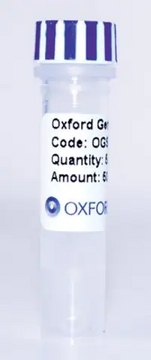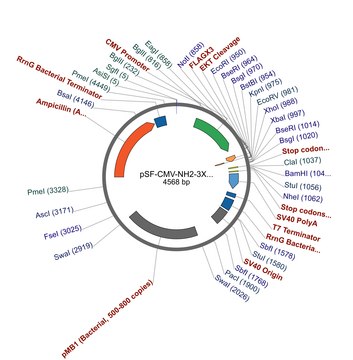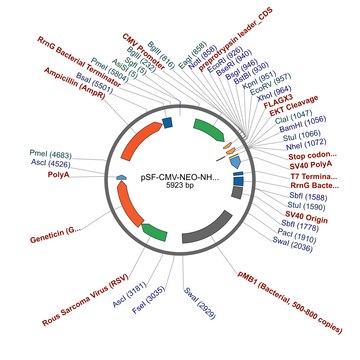Key Documents
Safety Information
GF89491045
Iron
rod, 1000mm, diameter 9.5mm, as drawn, soft ingot 99.8+%
Synonym(s):
Iron, FE007951
Select a Size
Select a Size
About This Item
Assay
≥99.8%
form
rod
manufacturer/tradename
Goodfellow 894-910-45
resistivity
9.71 μΩ-cm
bp
2750 °C (lit.)
mp
1535 °C (lit.)
density
7.86 g/mL at 25 °C (lit.)
SMILES string
[Fe]
InChI
1S/Fe
InChI key
XEEYBQQBJWHFJM-UHFFFAOYSA-N
1 of 4
This Item | OGS624 | OGS620 | OGS628 |
|---|---|---|---|
| bacteria selection ampicillin | bacteria selection ampicillin | bacteria selection ampicillin | bacteria selection ampicillin |
| peptide cleavage EKT | peptide cleavage EKT | peptide cleavage EKT | peptide cleavage EKT |
| peptide tag location C-terminal | peptide tag location N-terminal | peptide tag location N-terminal | peptide tag location C-terminal |
| origin of replication pUC | origin of replication pUC | origin of replication pUC | origin of replication pUC |
| mol wt size 5897 bp | mol wt size 5913 bp | mol wt size 4568 bp | mol wt size 5923 bp |
General description
Legal Information
Regulatory Information
Choose from one of the most recent versions:
Certificates of Analysis (COA)
It looks like we've run into a problem, but you can still download Certificates of Analysis from our Documents section.
If you need assistance, please contact Customer Support.
Already Own This Product?
Find documentation for the products that you have recently purchased in the Document Library.
Our team of scientists has experience in all areas of research including Life Science, Material Science, Chemical Synthesis, Chromatography, Analytical and many others.
Contact Technical Service

